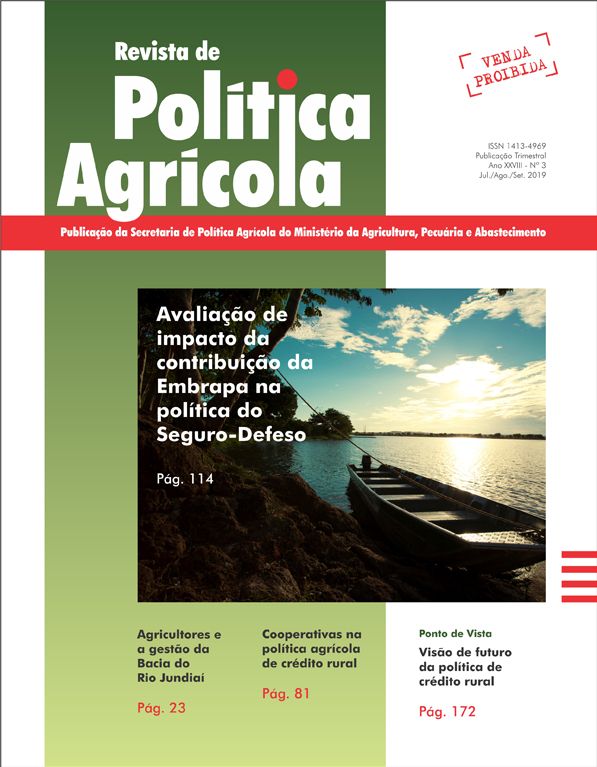Dynamics of Brazilian agriculture between 2006-2017
Keywords:
family agriculture, non-family agriculture, agricultural census, economic growth, economic developmentAbstract
The objective was to analyze the dynamics of Brazilian agriculture from the Agricultural Census of 2006 and 2017, with reference to the public policies of economic development contained in the Agricultural and Livestock Plan and in the Harvest Plan of Family Agriculture. Wanted to recognized of development policies and related to the dynamics of agriculture on the basis of the census. The content analysis and the descriptive statistic allowed to process and analyze the data. Investments in agriculture have grown leveraged by the amount destined for non-family agriculture and lower part of the family, however perpetuated the low number of beneficiaries and reduction of access to the financial system, contributing to the reduction of establishments. The farmland area added contributed by the expansion of soybeans, maize, sugarcane and the advancement of poultry, pig, sheep and goat. Mechanization, irrigation, electrification, fertilization, agrochemicals and labor outside the family increased. Direct planting has not progressed and organic production has receded, a fact that may be related to decreased technical assistance. Female empowerment and education are the main social indicators of improvement. The dynamics of agriculture are affected by the promotion of public policies and its casualness systematically impacts on economic development.Downloads
Published
2019-12-09
How to Cite
Scheuer, J. M. (2019). Dynamics of Brazilian agriculture between 2006-2017. Revista De Política Agrícola, 28(3), 131. Retrieved from https://rpa.sede.embrapa.br/RPA/article/view/1429
Issue
Section
Artigos Científicos


